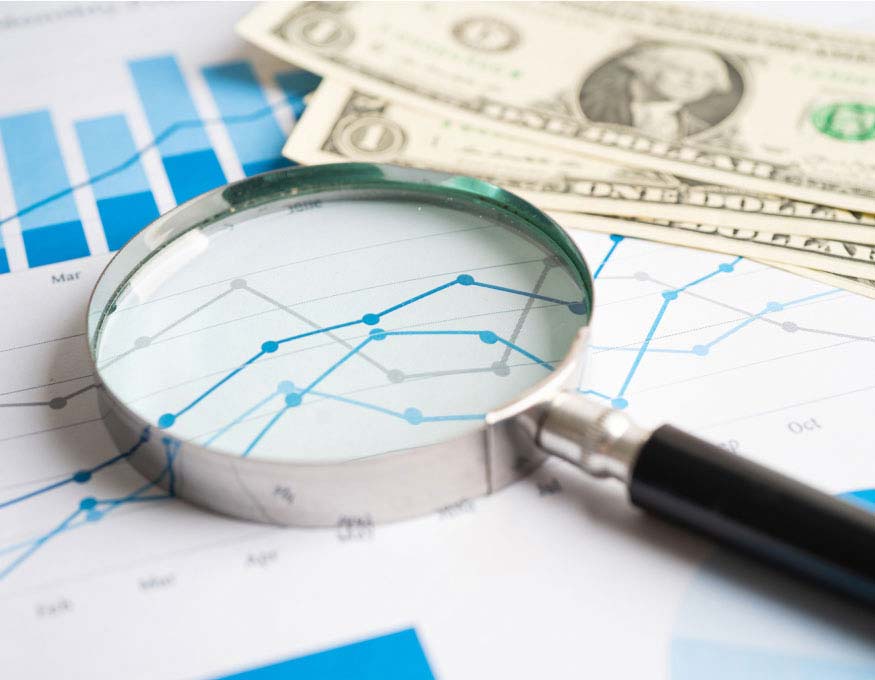Scan this article:
One of the key choices you will make as an investor is whether to buy growth stocks or dividend stocks, or a combination of the two.
Let’s quickly summarise what each is.
- Growth stocks are more likely to significantly increase in value over the long-term but less likely to pay a regular dividend (if, indeed, they pay a dividend at all).
- Dividend stocks are more likely to pay a regular dividend but less likely to significantly increase in value over the long-term.
In other words, growth stocks tend to be higher-risk-higher-reward investments, while dividend stocks tend to be safer and less volatile.
These are of course broad generalisations that don’t always hold true. Some ‘growth’ companies lose market share, leading to falls in their share price. Some ‘reliable’ dividend companies experience financial difficulties, forcing them to reduce or even cancel their dividend.
In that sense, we can think of the growth and dividend distinction as being more about our motivation for buying a particular stock.
What are growth stocks?
Growth stocks are generally considered to be companies that may outperform the market over the long-term. Sometimes they might be start-ups or less mature businesses.
One characteristic of growth companies is they tend to pay low or no dividends. Instead, they reinvest spare cash back into the business as they sense more opportunities to grow.
On a related note, many growth companies often earn small profits or may even lose money. That’s because they invest heavily today in order to acquire customers quickly and generate greater profits tomorrow.
Tesla for example took 18 years to post its first annual profit but is now valued 10 times higher than traditional automakers like General Motors.
What are dividend stocks?
Then there are those companies that pay regular dividends, often at above-average rates. These may be mature companies that have a well-established market share.
Dividend companies tend to be profitable and to have fairly predictable financial results.
In effect, they are regularly sharing their profits with shareholders rather than trying to grow their business quickly and pursue new opportunities.
Vanguard for example recognises BHP, Telstra and Coles as three such stocks in Australia and Johnson & Johnson, Home Depot and JPMorgan Chase as three in the United States.
Is it generally better to buy growth stocks or dividend stocks?
There is no ‘right’ answer with each strategy having its own advantages.
Are you the type of investor who wants to build real wealth for the long-term? If so, a diversified portfolio of growth stocks might be one way to achieve that goal.
If you’re the type of investor who wants to collect regular cash payments on the other hand, dividend stocks might be one of the ways to go.
Or perhaps you’d like to invest in both. It’s important to note that each has a place in a portfolio. Some investors for example may like to reinvest dividends back into the companies that paid them, helping to build their portfolio over time until it generates enough income to live off in retirement.
All investing strategies have trade-offs
Whichever you choose, there are always going to be some compromises.
For example, some growth companies may never turn a profit or fail due to intense competition or new technology. Such is the nature of investing.
Dividend stocks on the other hand may strike troubles of their own, slashing payouts during difficult periods. Investors should also note that in Australia dividends are taxed as income, meaning that you may have to pay back a third or more of them to the ATO, depending on your tax bracket.
Ultimately, the question of whether it’s better to buy growth stocks or dividend stocks depends on you. Consider your own financial circumstances and goals and pick a strategy that is right for you.

Become a part of
our investor community
Why you should join us:
- Join free and invest with no monthly account fees.
- Fund your account in real time with PayID.
- Get investing with brokerage from $2. Other fees may apply for U.S. shares.
Read our latest articles
Make knowledge your superpower and up your skills and know-how with our news, educational tools and resources.






























